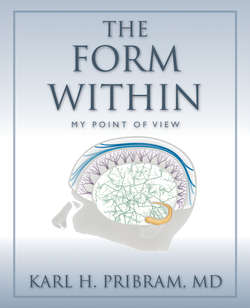Читать книгу The Form Within - Karl H Pribram - Страница 58
На сайте Литреса книга снята с продажи.
Fourier’s Discovery
ОглавлениеJean Baptiste Joseph Fourier, a mathematical physicist working at the beginning of the 19th century, did an extensive study of heat, that is, radiation below the infrared part of the visible spectrum. The subject had military significance (and thus support) because it was known that various patterns of heat could differently affect the bore of a cannon. Shortly thereafter, the field of inquiry called “thermo-dynamics” became established to measure the dissipation of heat from steam engines: the amount of work, and the efficiency (the amount of work minus the dissipation in heat) with which an engine did the work would soon be major interests for engineers and physicists. The invention of various scales that we now know as “thermo-meters”—Fahrenheit, Celsius and Kelvin—resulted, but what interested Fourier was a way to measure not only the amount of heat but rather to measure the spectrum of heat. The technique he came up with has been discovered repeatedly, only to have slipped away to be rediscovered again in a different context. We met this technique when we discussed the Pythagoreans, but both Fourier and I had to rediscover it for ourselves. The technique is simple, but if Fourier and other French mathematicians had difficulty with it, it may take a bit of patience on your part to understand it.
What is involved is looking at spectra in two very different ways: as the intersection among wave fronts and as mapped into a recurring circle.
To analyze the spectrum that makes up white light, we use a prism. What Fourier came up with to analyze the spectrum of heat can be thought of as analyzing spectra with a “clock.” The oscillations of molecules that form heat can be displayed in two ways: 1) an up-and-down motion (a wave) extended over space and time, or 2) a motion that goes round and round in a circle as on a clockface that keeps track of the daily cycle of light and darkness.
Fourier, as a mathematician, realized that he could specify any point on a circle trigonometrically, that is by triangulating it. Thus he could specify any point on the circumference of the circle, that is, any point on an oscillation by its sine and cosine components. The internal angle of the triangle that specifies the point is designated by the cosine; the external angle, by the sine.
When he plotted these sine and cosine components on the continuous up-and-down motion extended over space and time, the sine wave and the cosine wave are displaced from one another by half a cycle. Where the two waveforms intersect, those points of intersection are points of interference (reinforcement or diminution of the height of oscillations) just as at the intersection of Leonardo’s waves created by pebbles dropped into a pool. The heights of the points of intersection are numbers that can be used to calculate relations between the oscillations making up the spectra of heat. In this manner Fourier digitized an analogue signal.
Thinking back and forth between the two ways by which waveforms can be plotted is not easy. It took Fourier, a brilliant mathematician, several decades to work out the problem of how to represent the measure of heat in these two ways. One of my “happier times” was reading, in the original French and in English translations, Fourier’s stepwise groping toward this solution. My reason for being so happy was that I had tried for myself to understand his solution for over a decade and found not only that my solution was correct, but that Fourier had gone through the steps toward the solution much as I had. Further, I have just learned that quantum physicists are rediscovering this analytic “trick”: they speak of “modular operators” which divide the processes under investigation into clock-like repetitious segments. I asked my colleagues, “Like Fourier?” and received a nod and smile: I had understood.
29. Representing Oscillations as Waveforms and as Circular Forms
Meanwhile, as he was also active in politics during a most turbulent period in French history, Fourier had been put in jail and released several times before being appointed head of a prefecture. When Napoleon came to power, he soon recognized Fourier’s genius and took him to Egypt. Although French mathematics was the best in Europe, something might still be learned from the Arabs, whose mathematics had flowered some thousand years earlier.
